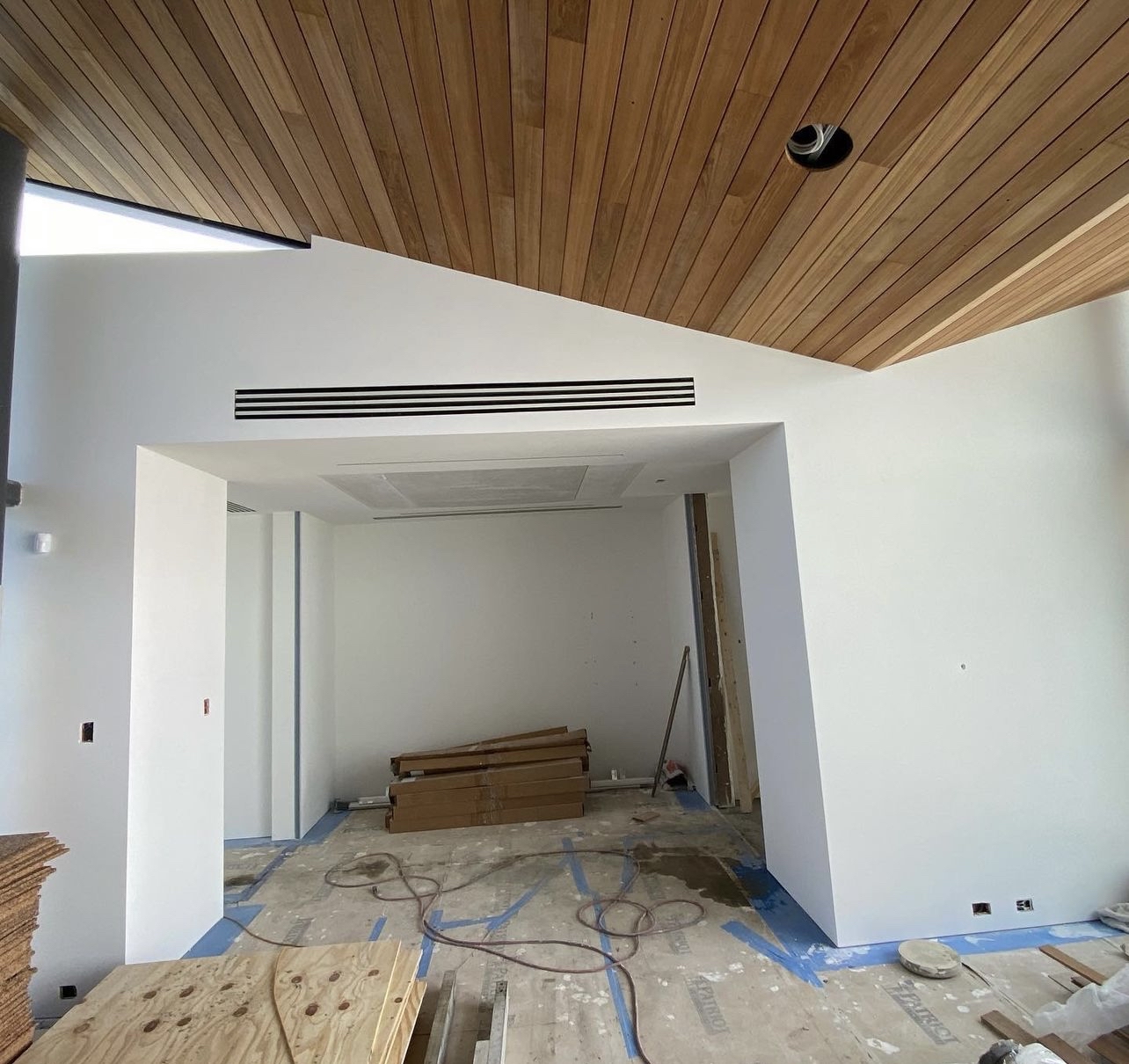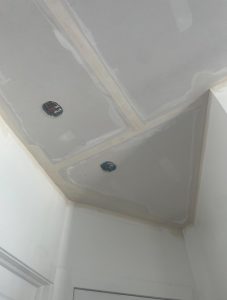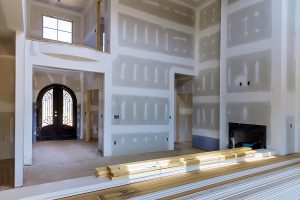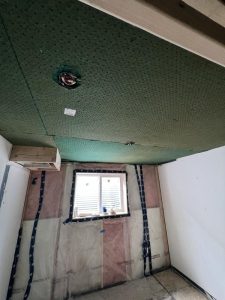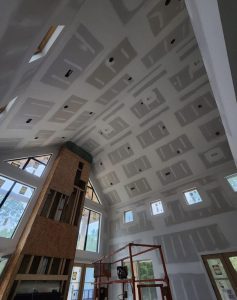Drywall, a seemingly mundane element of construction, has witnessed remarkable transformations in recent years thanks to ongoing innovations in technology and materials. Beyond its traditional role in providing smooth and even surfaces, modern drywall now incorporates cutting-edge features that contribute to enhanced performance, sustainability, and overall building quality. This blog post will take an in-depth look at the forefront of drywall technology, exploring the latest advancements that are shaping the future of construction.
1. Smart Drywall Systems
One of the most intriguing developments in drywall technology is the integration of smart features. Traditional drywall is now evolving into an intelligent building material with embedded sensors. These sensors can monitor various environmental factors such as temperature, humidity, and sound levels. The data collected by smart drywall systems contributes to energy efficiency, home automation, and overall comfort within the living space.
For instance, temperature sensors can help regulate heating and cooling systems more effectively, ensuring optimal energy usage. Humidity sensors contribute to early detection of moisture issues, preventing mold and mildew growth. Smart drywall can also include sound sensors to monitor noise levels, providing valuable information for creating acoustically optimized spaces.
2. Mold-Resistant Drywall
Mold is a common concern in construction, especially in areas with high humidity. Innovations in drywall technology have led to the development of mold-resistant variants. These types of drywall incorporate additives that actively inhibit the growth of mold and mildew. By using specialized coatings and materials, manufacturers create a protective barrier that prevents moisture absorption and discourages the conditions favorable to mold development.
This advancement is particularly valuable in regions prone to dampness or frequent moisture exposure. Mold-resistant drywall not only ensures a healthier indoor environment but also extends the lifespan of the building by preventing structural damage caused by mold growth.
3. Fire-Resistant Drywall Solutions
Fire safety is a critical consideration in construction, and recent innovations have focused on enhancing the fire resistance of drywall. Specialized materials and coatings are being incorporated into drywall products to create barriers against flames and heat. This technology is crucial for both residential and commercial applications, providing an added layer of protection against fire-related hazards.
In addition to meeting safety standards, fire-resistant drywall contributes to the overall resilience of a structure. It buys valuable time for occupants to evacuate and allows firefighters to gain control of a blaze before it spreads extensively.
4. Lightweight Drywall Materials
Traditional drywall can be heavy and cumbersome, making the installation process challenging, especially for large projects. Innovations in lightweight drywall materials aim to address this issue. By utilizing alternative materials or modifying the composition of gypsum boards, manufacturers are producing drywall that maintains structural integrity while significantly reducing weight.
The benefits of lightweight drywall extend beyond ease of handling. Contractors find it easier to transport and install, leading to increased efficiency on construction sites. Additionally, the reduced weight can be advantageous in projects where load-bearing considerations are critical.
5. Acoustic Performance Enhancements
Acoustic considerations are increasingly important in construction, and advancements in drywall technology are addressing the need for improved sound control. Soundproof drywall is designed to minimize sound transmission between rooms or from external sources. This is achieved through the integration of specialized materials that absorb and dampen sound waves.
Such innovations are particularly valuable in residential buildings, offices, and entertainment spaces where creating a quiet and comfortable environment is essential. Homeowners and businesses alike benefit from the ability to control noise levels and enhance overall acoustic comfort.
6. Green Building Materials
As sustainability becomes a central focus in construction, innovations in drywall technology are aligning with green building principles. Eco-friendly drywall options are emerging, utilizing recycled materials, low-impact manufacturing processes, and sustainable sourcing. These environmentally conscious alternatives contribute to reducing the ecological footprint of construction projects.
Certifications such as LEED (Leadership in Energy and Environmental Design) are driving the adoption of green building materials, including drywall. By choosing sustainable options, builders and homeowners can contribute to environmental conservation without compromising on quality or performance.
7. 3D Printing in Drywall Construction
The influence of 3D printing is extending to the realm of construction, and drywall is no exception. 3D printing technology enables the creation of custom drywall elements with intricate designs and tailored solutions. This innovative approach allows for greater flexibility in design, opening up new possibilities for architects and builders.
The use of 3D printing in drywall construction can streamline the manufacturing process, reduce waste, and enable the production of unique and complex shapes that would be challenging or impossible with traditional methods. This technology holds promise for creating visually striking interiors while maintaining the practical benefits of drywall.
8. Flexible Drywall Solutions
Traditional drywall is rigid, limiting its applications in areas with curved walls or unconventional designs. Recent innovations in flexible drywall solutions aim to address this limitation. These flexible materials allow for more versatile installations, conforming to curves and bends without compromising structural integrity.
The applications of flexible drywall extend to both residential and commercial settings. In residential construction, curved walls are gaining popularity for their aesthetic appeal, and flexible drywall enables the realization of such designs. In commercial spaces, especially those with unique architectural features, flexible drywall provides a solution for achieving creative and dynamic layouts.
9. High-Performance Finishes
The finishing touches on drywall play a crucial role in both aesthetics and durability. Innovations in high-performance finishes are contributing to superior surface quality and longevity. Advanced textured finishes, coatings, and paints are designed to withstand wear and tear while providing a polished and attractive appearance.
Builders and homeowners can benefit from a wide range of finish options that not only enhance the visual appeal of a space but also contribute to the durability and resilience of the drywall. The right finish can withstand daily use, resist stains, and facilitate easier maintenance.
10. Interactive Drywall Surfaces
A particularly futuristic aspect of drywall technology is the exploration of interactive surfaces. Imagine drywall that goes beyond its passive role and becomes an interactive display. This experimental technology opens up possibilities for creating smart homes, offices, and public spaces with dynamic and responsive walls.
Interactive drywall surfaces could be used for various purposes, from displaying information to creating immersive environments. While this technology is still in its early stages, the potential applications are vast, ranging from entertainment and education to enhancing the functionality of living and working spaces.
Conclusion
In conclusion, the landscape of drywall technology is evolving rapidly, driven by a commitment to improved performance, sustainability, and innovation. From smart systems that monitor and enhance the living environment to mold-resistant and fire-resistant solutions that prioritize safety, the latest advancements in drywall technology are reshaping the way we approach construction.
As these innovations continue to mature, builders, architects, and homeowners will have a growing array of options to consider. Whether it’s choosing materials with a smaller environmental footprint, incorporating cutting-edge smart features, or experimenting with 3D-printed designs, the future of drywall holds exciting possibilities for the construction industry. Staying informed about these advancements is key to making informed decisions that align with the goals of safety, efficiency, and sustainability in construction projects.

